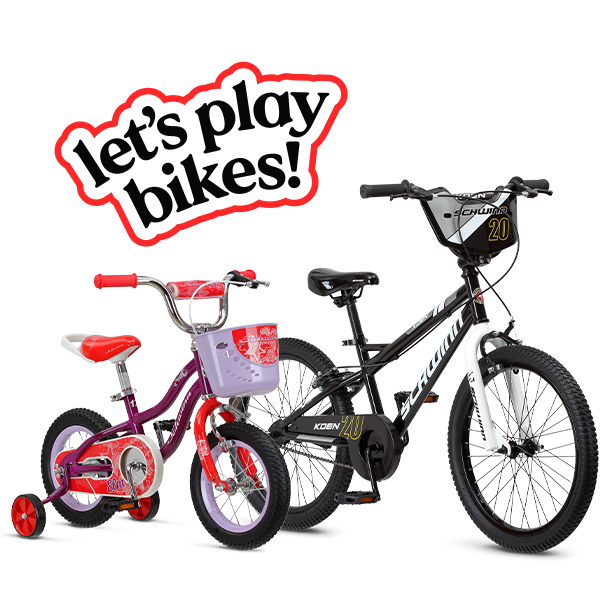Adult Fit
The Guide to Adult Bike Sizes and Fit
When it comes to the most enjoyable bicycle ride, the fit of your bike is important.Bikes come in different sizes just like clothes, finding a bike that fits you is important. The correct bike fit makes your ride feel more comfortable and enjoyable.There are two great ways to help figure out if a bicycle fits you the way it should: Casual Bike Rider Fit and Customized Bike Fit.
Casual Bike Rider fit
The casual bike adult rider sizing/fit method is good for riders who are looking to start biking at an entry level and are most likely going to buy their bicycle through a large retailer that doesn’t carry one bicycle model in several different frame sizes.
Most adult bikes you will find at your local Schwinn retailer have 26″, 27.5″, 29″, or 700c wheels, but this is not always indicative of what size bicycle is right for you because bike frame sizes vary. To find which frame is best suited for you it is important to size up the bicycle to your inseam (by measuring the distance from the ground, with your shoes on to your groin). If you plan on riding your bike for casual or recreational purposes this guide is a great way to see if a bike fits you right.
Customized Bike Fitting
The customized bike fitting method is more appropriate for those adults who plan on riding their bike more frequently, investing more money, and who want to buy a bike frame based on their body measurements.Maybe you want to dabble in something a bit more intense; you want to do a century ride or are thinking about entering a race. Maybe the doctor is prescribing bike rides to lower your blood pressure or reduce the waistline. In these cases, you and your Schwinn will be spending a lot of time together and you should spend some time to get serious about being fit to your bike.
While Schwinn recommends that you use the chart above for the majority of our bicycles, the key in this case is to have your local bike shop help you figure out what size you are and fit you professionally. This is critical for comfortable riding. Back pain, knee pain, shoulder pain and neck pain are NOT a normal part of riding a bike, but rather a sign that the bike you are riding doesn’t fit correctly or isn’t set up correctly. A bike that is too large or too small can also be difficult to control. Your ideal frame size is based on two body measurements: inseam and torso length. Torso length determines the “reach” of the frame (how long it is) while inseam determines seat-tube length. Your local bike shop can help you figure out these two measurements and how to find the frame size that fits you, but in general, bikes get longer as they get larger.
- Measure your height
- Measure your inseam
- Measure your reach and optimal riding angles
What if I got my bike size wrong?
If you are riding a bicycle that is just a bit too small or too large, don’t worry, you can still get a proper fit by making a few small adjustments:- Move your bike saddle forward or back to adjust your hip position when sitting down.
- Buy a longer or shorter stem to adjust the reach to your handlebars, or the angle at which your handlebars sit.
- Buy a different bicycle seat post: you can adjust the height with a longer, or shorter seat post. They also make posts with different amounts of offset forward and back to help adjust your position on the bike.
- Give it time. Sometimes a new bike or position (due to frame geometry) can take some time to get used to.


